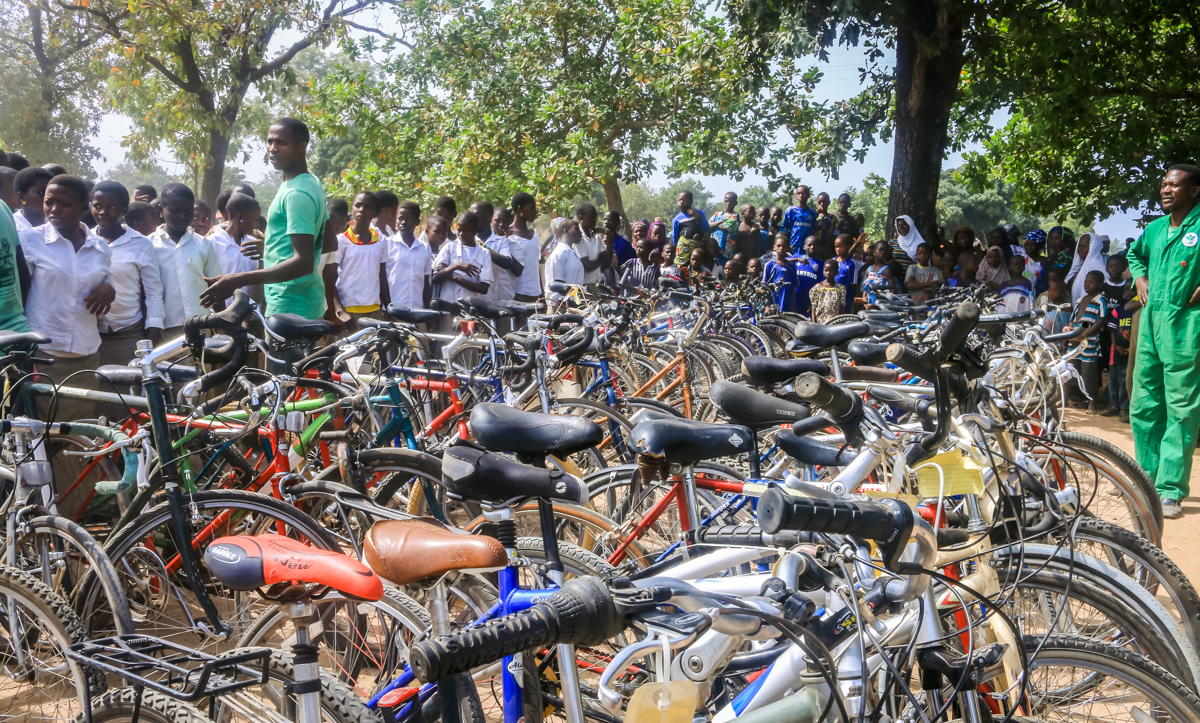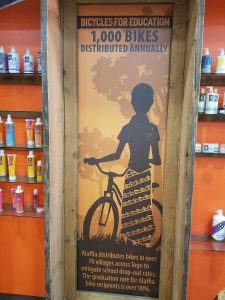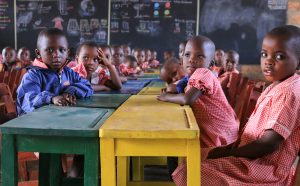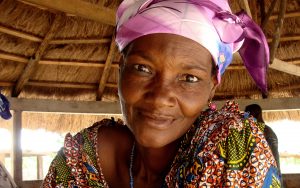Why Send Used Bicycles to Africa?
No one is more aware of the difference that access to education can make than GACE founder, Olowo-n’djo Tchala. Because, his remarkable achievements were launched when he obtained a chance to continue his education.
Critical Goal: Reversing the Dropout Rate
In rural Togo, 90% of girls & 80% of boys do not finish secondary school (UNICEF, 2016). There are no buses and kids walk up to 10 miles a day to get to school. And, it’s very difficult for girls, who have more daily time-intensive tasks. They fetch wood, carry water, tend gardens, and prepare food.
Results from Our Program
- 90+% of our bicycled students graduate high school
- 9,000+ bicycles distributed to Togolese students.
- 70+ villages with middle/high school transportation via bicycles.
- 1,000s of bicycles diverted from US landfills.
- Reduced gender gap in girls attendance at bicycled schools.
Partnering Many People with a Common Goal
 Our Bicycles for Education program is a great example of international cooperation and community building across oceans and cultures.
Our Bicycles for Education program is a great example of international cooperation and community building across oceans and cultures.
Alaffia collects used bicycles in Washington and Oregon. This is possible due to Alaffia retailers, brokers, law enforcement staff, local citizens and other nonprofit partners.
Donations of bicycles, bike parts and cash for ocean shipping, allow us to send 2-3 containers of bikes (350-400 bikes each) per year.
We have not yet seen any other approach with lower program costs than donated used bicycles. Or, a higher allocation of program assets to those most in need.
We partner with Bikeworks in Seattle to trade bicycles that will not work for our students in Togo, with ones that do.
How You Can Help
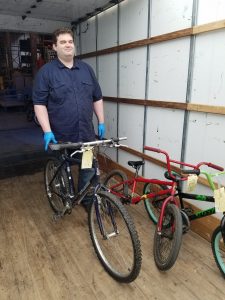 DONATE A BIKE: Geared, non-racing, adult size bikes are preferred. We collect in the Pacific Northwest. Contact us for pickups, or bring your bike to Alaffia headquarters in Tumwater, WA. We also take serviceable parts like bike seats or wheels. New tubes, wheels, brake cables, and other parts gladly accepted.
DONATE A BIKE: Geared, non-racing, adult size bikes are preferred. We collect in the Pacific Northwest. Contact us for pickups, or bring your bike to Alaffia headquarters in Tumwater, WA. We also take serviceable parts like bike seats or wheels. New tubes, wheels, brake cables, and other parts gladly accepted.- SHIP A BIKE: If you do not have a bike to donate, a $15 donation ships 1 bike to Africa!
- VOLUNTEER: This program works due to INCREDIBLE volunteers! Each bike needs its pedals and front wheel removed for packing. We pack our containers from floor to ceiling. (Skip your gym workout!) 5-10 volunteers giving 3-5 hours a month, allows us to reach a goal of 1,000 bicycles a year to Togo.
Volunteers can also help organize bike drives in your community.
Nuts & Bolts: How Does Bicycles for Education Work in Togo?
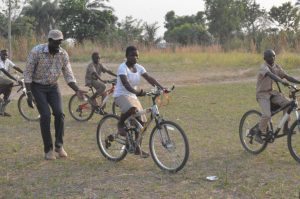 The Alaffia Bicycles for Education program benefits producer communities in West Africa who are part of Alaffia’s supply chain. Program costs in-country are funded by Alaffia product sales. But first, we have to get the bikes to Togo.
The Alaffia Bicycles for Education program benefits producer communities in West Africa who are part of Alaffia’s supply chain. Program costs in-country are funded by Alaffia product sales. But first, we have to get the bikes to Togo.
Our goal is for cash donations to make 15% of our needed program revenues. This goes to our US costs to ship ocean freight. So, your cash donations have a high impact: they are the final piece, on top of volunteers, bicycle donors, and Alaffia contributions. Think of it as a bucket of water that is nearly full: the last cup tips it over!
Bicycles arriving on the ocean cargo containers are taken to our bike maintenance warehouse in Sokode, central Togo. Our bike mechanics handle repairs and inscriptions to identify the bicycles.
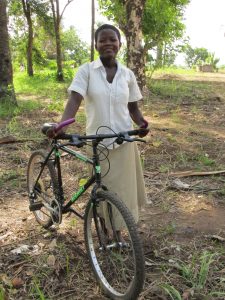 Meanwhile, our community trainers assess student populations and build relationships with school teachers and local officials. These local partners are critical to the donation event and follow-up activities.
Meanwhile, our community trainers assess student populations and build relationships with school teachers and local officials. These local partners are critical to the donation event and follow-up activities.
- Students must have a demonstrated need and academic effort to receive a bicycle.
- The bicycles must be presented annually for maintenance and documentation.
- GACE tracks the school retention and graduation rates of bicycled students with participating schools.
 Ceremonies for graduating students allow them to give their bike to a new student. The students are proud to become the givers. As a result, the bike can change more than one life. We estimate 1/3 of our bikes are re-donated.
Ceremonies for graduating students allow them to give their bike to a new student. The students are proud to become the givers. As a result, the bike can change more than one life. We estimate 1/3 of our bikes are re-donated.
Give A Girl A Bike
Research shows that African girls who complete secondary education are less likely to become pregnant teens who have higher risk pregnancies. Thus, this helps to reduce Sub-Saharan maternal deaths. Moreover, the benefits of educating girls include a multi-generation impact on education. Because, higher income is associated with higher levels of education. And when women control more household income, children benefit as a result of more spending on food & education (World Bank, 2011).
